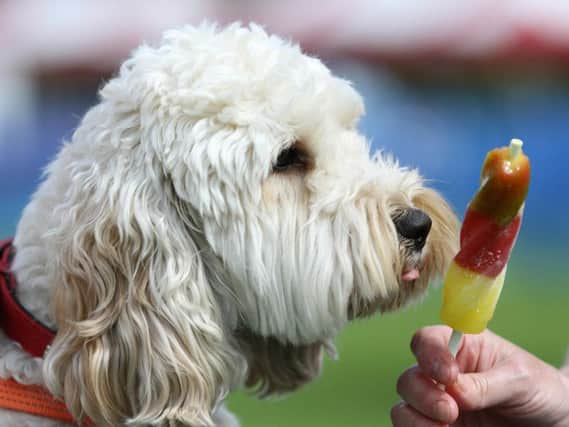How to take care of your pet in a heatwave


This news will be welcomed by most, however, these rocketing temperatures can be very harmful to the UK’s pet population and can even be fatal in some cases.
So to help owners provide the best care possible for their pets during the heatwave, vets are now offering advice on how to best prevent heatstroke and what problems they need to be aware of in the hotter weather.
Advertisement
Hide AdAdvertisement
Hide AdDr Huw Stacey, director of clinical services at Vets4Pets, said: “The impending heatwave in the UK means pets will be at high risk of suffering from heatstroke, so owners need to take the necessary precautions to help keep their pets as cool as possible.
“Every year, pets suffer or even die when their owners make the mistake of leaving them inside a parked car, even if it is just for a few minutes.
“Whilst many owners will already know to never leave their pets in a car on a warm day, not everyone is aware that conservatories and caravans can be equally as dangerous.
“Cars, conservatories and caravans all act as a sun trap, and even if it feels relatively mild outside, temperatures inside can soar between 38 and 50 degrees in minutes.
Advertisement
Hide AdAdvertisement
Hide Ad“Being subjected to these kinds of temperatures can not only lead to heatstroke, but can also cause fatal brain or organ damage. A mortality rate of 50% has been reported if temperatures reach 65 degrees, which can easily happen in a car or conservatory on a hot day.”
High temperatures can also make the asphalt on roads and pavements dangerous for pets, as it can reach an unbearable 60 degrees in 30-degree weather.
“Asphalt can become far too hot for pets’ sensitive paws and pads and can cause burns, blisters and permanent scarring after just one minute of contact,” added Dr Stacey.
“Keeping pets in shaded areas and walking dogs at cooler times of the day can help avoid burnt paws.
Advertisement
Hide AdAdvertisement
Hide Ad“Smaller pets, including rabbits, guinea pigs and hamsters, can also suffer from heatstroke if they are exposed to direct sunlight for extended periods of time.
“To help keep them cool, it is always best to move their cages or hutches into shaded areas of the garden or into a cool area of the house, garage or shed.
“Dehydration from excessive panting can be a contributor to heatstroke but can also cause serious problems on its own. The signs of dehydration are sunken eyes, little or no urination and dry, sticky gums; eventually dehydration can lead to collapse and kidney failure. Pets should always have a supply of fresh water during these hotter periods.
“With the upcoming heatwave in the UK, heatstroke is a real cause for concern for pets, and owners need to know what symptoms to look out for.
Advertisement
Hide AdAdvertisement
Hide Ad“Heavy panting, excessive drooling, reddened gums, lethargy, drowsiness, lack of coordination, vomiting and collapse are all signs of heatstroke, and if a pet is displaying these symptoms, owners should move them to a cool area and call their local vet immediately.
“Whilst the hotter weather may be a welcome change for many owners, they need to remember that this can be an unpleasant change for their pets. But if they follow these tips, their pets can enjoy the warmer weather too.”